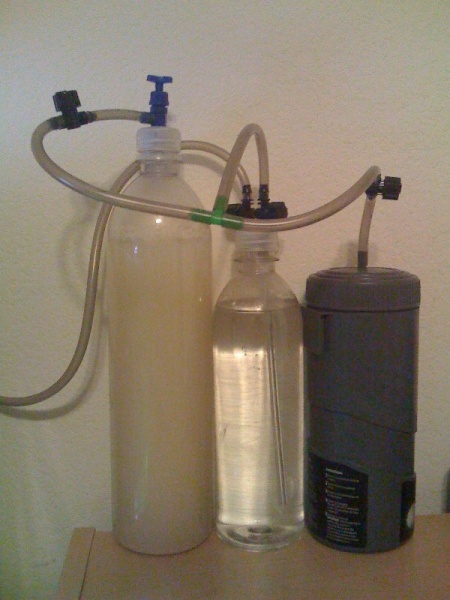For my DIY system, I tried various kinds of yeast. To be honest, just regular bakers yeast is probably your best bet. The champagne yeast did not last a whole lot longer, at least not in a mode that produced the higher levels of CO2 output that you are going to want. For the price, you are better off just sticking with the stuff you can buy at your local grocery store.
One of the "secrets" I found was I got the best output if I activated the yeast outside of the closed environment in a cup with a bit of warm (not hot) sugar water for 20 mins or so. More of the yeast cells will activate and start producing CO2 in an aerobic (open air) environment, and those cells will continue to produce in the closed, anaerobic environment of your bottle, versus just mixing them all together and screwing the cap on right away.
Also, you will want to add some sodium bicarbonate (baking soda) to your mix. This is the "stabilizer". This will extend the life of the mix as it will neutralize some of the acid that is formed as a biproduct, increasing the longevity of your yeast, and consequently, the length of time your mixture will last.
The other thing to consider is using multiple bottles for your system so that you can maintain a consistent output of CO2. When I was running it single bottle, it would go strong for a few days, then die down substantially for the next week or so. These fluctuations in CO2 encouraged algae growth - which I experienced in the form of BBA. When I added a second bottle to the system, and staggered the mixture changes, I had a fairly consistent level of CO2 output, and the BBA all but disappeared within a few days.
Here is a picture of the setup I used.
By adding the little mini black ball valves, I could isolate each bottle during a mixture change, thus never interupting CO2 flow. If you do that, make sure you don't accidently leave one closed after you hook up the fresh bottle and let it pressurize - could result in a big mess (not that I am speaking from personal experience or anything...

) Also, the middle bottle is a gas separator that acts as a bubble counter, and prevents floccuated yeast from getting into the aquarium, a problem I experienced before adding the gas separator. Not counting the hagen system I bought (which I would not recommend, purchased it before doing my homework), the whole setup probably cost less than $10 bucks. If you care about what the system looks like (I did, it sat out on a shelf), the "SmartWater" bottles are decent looking, label comes off easy, and they come in various sizes, up to 2L. Plus, I felt much more intelligent while consuming the water inside.


